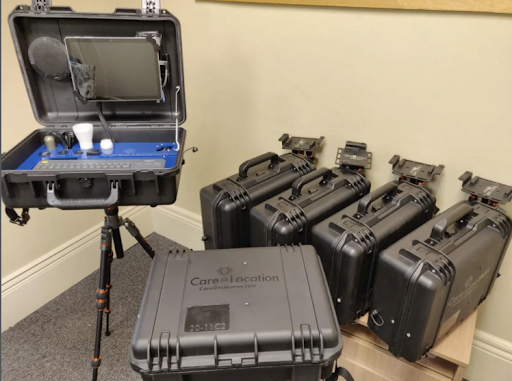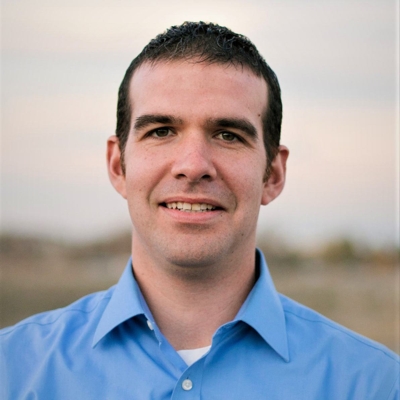
“There are gaps in the system that we are suited to address, and that’s what drives us.”
Dan Leman PA-C, Care On Location VP of Operations and Clinician
As a user of healthcare, you’ve probably experienced these gaps in the system yourself. The team at Care On Location is very aware of them, and that’s where we come in. We are in this profession because we want to help people. That’s why we strive to change how Coloradans with Medicaid access healthcare: making it easier and more accessible.
Gaps in the system include a discrepancy in the care that is provided to a patient and the recommended best practices for healthcare. These gaps are usually experienced by those of minority racial and ethnic backgrounds, as well as those who are considered to be of lower social-economic status (meaning people with less money). Gaps also refer to a disparity in access to healthcare, such as what people who live in rural areas tend to experience.
After working in telemedicine for large national companies, emergency physician Dr. Jon Savage started Care On Location in 2016. Dan Leman (PA-C) joined the team in January of 2018. In addition to providing care through telemedicine, we also produce Mobile Telemedicine Exam Kits (MobilTEK) designed to improve telehealth. This is where Dan spends a lot of his time these days.

The development of MobilTEK hardware started when EMTs needed a better way to connect to us while on-scene with patients. So a briefcase with specialty equipment was created to allow our providers to ”see and hear“ patients better.
We participated in the Prime Health challenge event, where a partnership with the Colorado Coalition for the Homeless began. Their nurses who go to patients outside of the clinic on the streets of Denver needed a way to connect patients to their providers. So, we developed and improved the MobilTEK case and backpack. As a result, they now have nurses who use them on the streets with people experiencing homelessness and in some of the temporary residencies where they see patients in the lobby.
From there, our hardware development and sales have grown, from having our equipment in many of Colorado’s rural jails to our work in developing countries where we use the MobilTEK case to bring telehealth to underserved areas. Dan is currently on a trip to Bolivia, working with rural clinics to train them on the MobilTEK case.
If you’re wondering why this matters to you, it’s because it could be how you access medical care in the future.
One example is through our Care Connector Program, where we use the MobilTEK kits to provide care in underserved areas. ”It allows us to perform a more thorough and advanced physical exam so we can diagnose and treat more,” says Dan.
For patients having more complicated issues and needing a private place with a connected device, they can have an assisted visit with a Care Connector so that either Care On Location or another connected specialist can see the patient and be able to listen to the heart and lungs, evaluate the upper respiratory system, or have the Care Connector assist in evaluating the patient. Still, with our MobilTEK kits, a community could place one in, say, their library, and community members could receive an exam there.
Dan’s also very excited about a Regional Accountability Entities Reinvestment grant we were awarded to build a telehealth-enabled mobile clinic. We will now be able to bring our colocation telehealth model to many Colorado Communities and support organizations that typically would not be able to add a health clinic to their facility.
Already, Care On Location is already helping out Colorado communities in many ways, and one of the best examples is the rural mom.
“I saw someone not too long ago in South Park,” says Dan. Her child was having an eye issue. “It would have taken her an hour and a half to get her son to the doctor only to find out her child didn’t need any treatment that she couldn’t already provide from home. But we were able to save her the trip and provide her the peace of mind that her child was okay. This is why I love the way we provide healthcare.”
“What really sets us apart from national telehealth companies is our ability to connect patients to local follow-up care,” says Dan.
“I talked to someone who needed a primary care follow-up, and we had the resources and area knowledge to connect them with a provider four miles from their house that accepted Medicaid, and could get them in to be seen in the next week,” says Dan.
He also notes that we can help connect people to medicine through either local pharmacies or physical delivery.
And it doesn’t stop there. We can even help connect patients to housing, food, or most anything else they need.
We are recognized for our work using the tools at our disposal to connect and facilitate referrals. We want to continue creating and improving opportunities to provide care in underserved areas.
Our goal since the beginning has been to improve access to Telehealth, and Dan and the team at Care On Location continue to work on that every day.
Care on!